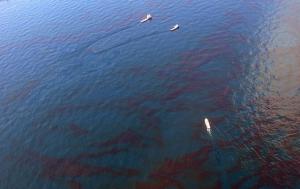Water securityNew technology pinpoints water contamination sources
When the local water management agency closes your favorite beach due to unhealthy water quality, how reliable are the tests they base their decisions on? As it turns out, those tests, as well as the standards behind them, have not been updated in decades. Now scientists have developed a highly accurate, DNA-based method to detect and distinguish sources of microbial contamination in water.

PhyloChip has been used to study enviromental conditions after the Deepwater Horizon oil spill // Source: commons.wikimedia.org
When the local water management agency closes your favorite beach due to unhealthy water quality, how reliable are the tests they base their decisions on? As it turns out, those tests, as well as the standards behind them, have not been updated in decades. Now scientists from Lawrence Berkeley National Laboratory (Berkeley Lab) have developed a highly accurate, DNA-based method to detect and distinguish sources of microbial contamination in water.
LBL says that the new method, using the award-winning PhyloChip, a credit card-sized device that can detect the presence of more than 60,000 species of bacteria and archaea, was found to be more sensitive than conventional methods at assessing health risks. In tests at the Russian River watershed in Northern California, the Berkeley Lab researchers found instances where their method identified potential human health risks that conventional fecal indicator tests had failed to detect. Conversely, they also found instances where the conventional tests flagged bacteria that weren’t likely risks to human health.
The research was led by Eric Dubinsky and Gary Andersen, microbial ecologists at Berkeley Lab, and was published recently in the journal Water Research. Steven Butkus of the North Coast Regional Water Quality Control Board, which supported part of the research, was also a co-author.
“With the PhyloChip, in an overnight test we can get a full picture of the microorganisms in any given sample,” Dubinsky said. “Instead of targeting one organism, we’re essentially getting a fingerprint of the microbial community of potential sources in that sample. So it gives us a more comprehensive picture of what’s going on. It’s a novel way of going about source tracking.”
What local water agencies currently do is collect water samples, culture the bacteria overnight, and then check the growth level of two types of bacteria, E. coli and Enterococcus, which are presumed to be indicators of fecal contamination.
Power of the PhyloChip
However, this method does not distinguish between sources. The bacteria could have come from humans, cows, ducks, sewage, or even decaying vegetation.
